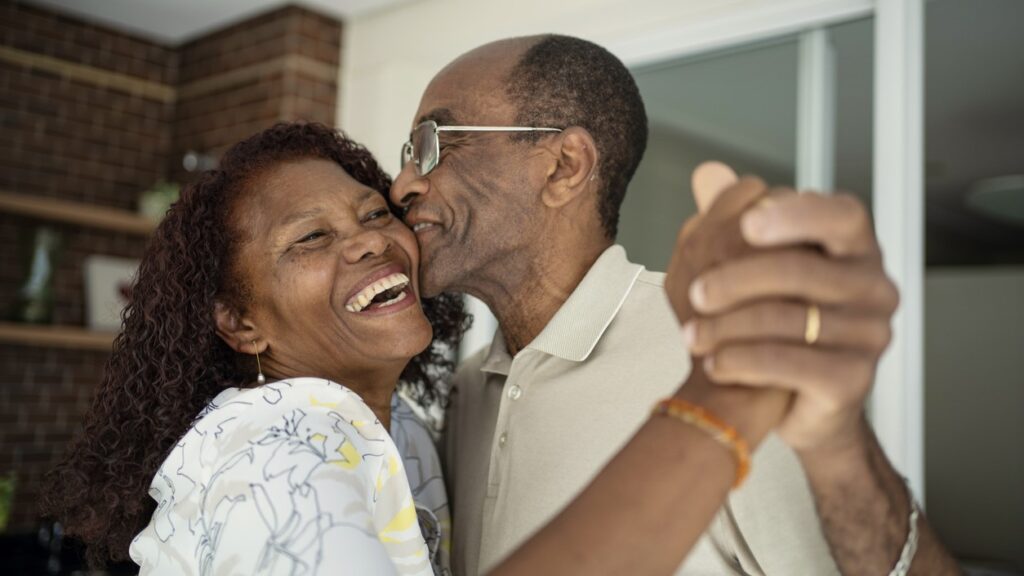Love is hard to describe, making it hard for scientists to measure.
Most studies in this area also focus exclusively on romantic relationships, often using small, nonrepresentative samples. As a result, detailed accounts of the various ways people experience love are scarce.
Published in Frontiers in Psychology, recent research by Saurabh Bhargava, Ph.D., Carnegie Mellon University, addresses these gaps. By tracking how often people felt different types of love over time, it reveals intriguing insights on gender and relationship dynamics.
Studying the experience of love
To unravel the great mysteries of love, Dr. Bhargava conducted two studies involving thousands of adults.

The first study recruited 3,867 English-speaking participants ages 18 to 64 from the United States. During a period of ten days, they received mobile push notifications to complete a diary entry every 30 minutes during waking hours.
They reported their activities, the people they were spending time with, emotional experiences, and well-being. From this data, Dr. Bhargava inferred the participant’s primary love targets (e.g. partners, friends, or children) and the type of love felt (e.g. passionate, friendly, or caregiving).
The second study, analyzing over 7,000 responses from a 2014 U.S. online survey, provided supplementary data. Participants were asked if they had felt love, worry, excitement, or anger in the last hour. Those who reported love (778 people, or 11%) answered additional questions about their experiences.
Findings

The results reveal demographic trends and changes in how love is felt over time. They also suggest that experiencing love improves one’s wellbeing.
Demographic trends
Men experienced love less than women in both studies.
In the first study, they were less likely to report feeling love when with partners, children, other family, and friends. The biggest gaps were with friends (43%) and children (41%), while the smallest with a partner (23%).
The second study showed similar results: men were 26% more likely to direct love toward a partner and 49% less likely toward a child compared to women.
Millennials experienced love more than other generations. Those aged 30 to 39 reported feeling the emotion 34% more often than those aged 18 to 29, and 36% more often than those aged 40 to 49.
Black participants reported love more often than non-Hispanic Whites.
Participants with household incomes under $50,000 reported love 45% more often than those with higher incomes.
Love changes over time

Time can augment feelings of love or diminish them.
In the long term, feelings of love changed for married couples.
Those married over 3 years reported 37% less partner love than those married 2 years or less. This was mainly due to a 34% decrease in feeling love when with a partner, rather than less time spent together. Women primarily drove this decline in partner love over time by reporting love less often.
In terms of passionate love, those married for over 3 years experienced it about half (53%) as often as those married for 2 years or less. Notably, mature couples still reported significant levels of passionate love, contradicting the idea that it completely fades over time.
Study two found married women experienced passionate love 55% less than unmarried women.
In the short term, partner love grew after separations of any length during the day, with a notable increase after 8 hours.
In the mood for love
Experiencing love significantly enhances people’s mood, even when considering other factors.
Specifically, feelings of partner love improved mood for both men and women. This mood boost was stronger and lasted longer compared to just spending time with a partner.
Over time, the impact of partner love on mood changed for men and women. In marriages of 2 years or less, women got a bigger mood boost from partner love compared to men. But among marriages of over three years, men experienced a bigger mood boost.
The nature of love

Love, in all its forms, remains a cornerstone of human connection.
Both women and men reported a high prevalence of partner love, especially at the beginning of relationships. They also felt increased love after spending time apart during the day and enjoyed a significant boost to wellbeing when in love.
In contrast, men reported less love overall and for their children in particular. They also experienced less decline in partner love over time than women.
“Across similarities and differences, the findings allude to an adaptive, universal, and highly functional emotion that may play a central role in relationship formation and sustenance,” wrote Dr. Bhargava.
More love research is thus needed to continuously unravel this beautiful, complex, and evolving feeling that can never be understood.
Featured Image Source: iStock



